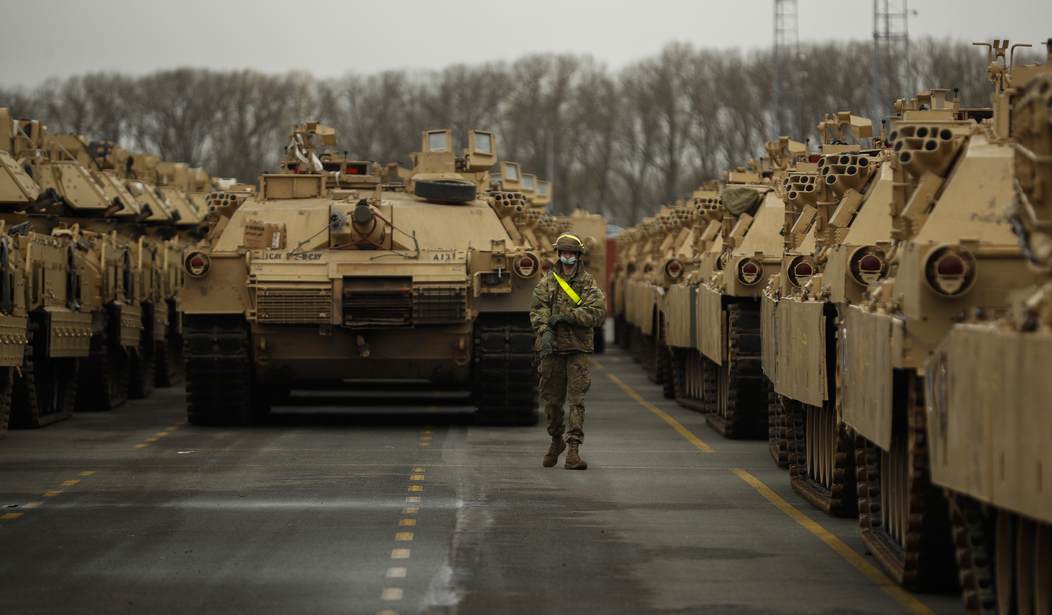The recently concluded NATO meeting in Washington dealt publicly with the U.S. presidential race and war in Ukraine. But away from the public eye, NATO military planners were dealing with far more mundane matters: how could they fill the holes in the alliance's defense if the nations won't pay for it?
NATO leaders agreed last year to a complete overhaul of the alliance's defenses. It would be paid for by the nations spending 2% of their gross domestic product on national defense.
The planners have been arguing for months about the minimum defense requirements that would be the biggest overhaul of the alliance's defenses in three decades. They finally agreed on an outline and sent it to NATO governments in recent weeks.
The governments will then convert the plan into specifics and vote on the outcome in the fall of 2025 when NATO defense ministers next meet.
The planners identified six critical areas that needed to be addressed: "These include shortages in air defenses and long-range missiles, troop numbers, ammunition, logistical headaches and a lack of secure digital communications on the battlefield," according to conversations Reuters had with NATO officials.
How many air defense systems have been sent to Ukraine? How many missiles? How much ammunition? Perhaps NATO should look to its own defenses before it tries to defend another country.
"We need to recognize that for America, whatever the result of the presidential election, the priority is increasingly going to shift to the Indo-Pacific, so that the European nations in NATO must do more of the heavy lifting," British Defence Secretary John Healey said on the sidelines of the Washington summit.
Related: Trump Readies Mar-a-Lago for Netanyahu Visit While Harris and Many Democrats Boycott the Speech
Do NATO countries have the will to spend what's necessary to make the alliance viable? Twenty-three countries out of 32 have matched or exceeded the 2% GDP. But almost everyone agrees that to make NATO defenses credible, the 2% number has to rise.
"We may expect to see a political backlash materialise, especially if politicians try to explain away cuts elsewhere with increased defence budgets," Eurointelligence, a news and analysis service focused on the EU, said in a July 12 note.
It's not looking good.
Reuters has previously reported that NATO planners believe it will need between 35 and 50 extra brigades to withstand a Russian attack. A brigade consists of 3,000 to 7,000 troops, which would mean anywhere from 105,000 to 350,000 soldiers.
It means, for example, that Germany would need 3-5 extra brigades or 20,000 to 30,000 additional combat troops, the source said, effectively one more division on top of the three divisions Berlin is working to equip at the moment.
The defence ministry in Berlin declined to comment on classified plans.
Echoing U.S. officials, many European policymakers – including Britain's Healey — are already saying that defence spending will have to top the alliance's current target of 2% of GDP.
Total spending on arms by NATO countries will hit $1.474 trillion in 2024. The U.S. portion of that is $967 billion. That means that 31 nations spend around $500 billion on national defense. None of these nations are "poor" by third-world standards and most are considered fabulously wealthy.
Lieutenant Colonel Charlie Dietz, a Pentagon spokesperson, tried to run interference for the Europeans. "NATO's regional defense plans involve enhancing readiness and flexibility across the Alliance. We remain committed to contributing significantly to these efforts," he told Reuters.
The biggest problem, compared to the Cold War, is that the battle lines are going to be further East than the Eastern part of Germany. And the lines are probably going to be a lot longer.
Whereas tens of thousands of NATO and Soviet troops faced off directly along the inner-German border during the Cold War, deploying troops now will take longer with the frontline of any conflict likely to be further east – up to 60 days, including the time to get a political decision, according to the first military planner.
Europe does not have enough rail capacity to move tanks, and railway gauges vary between Germany and ex-Soviet Baltic states, meaning weapons and equipment would have to be loaded onto different trains.
The first NATO planning official said cyber defences need to be strengthened to protect against a hacking attack that could affect possible deployments, for example, in Poland that could jam railways switches and halt troop movements eastward.
That makes speedy decision-making and a reliable checklist of red flags, indicating an imminent Russian attack, essential.
How can NATO forces be protected en route to the front lines? Traversing Germany will be no picnic. The hope is that "early warning signals" will give NATO enough time to preposition troops and supplies further forward.
If Putin wants to destroy the Russian army, he can attack NATO any time he wishes. But making NATO defenses formidable enough to deter him in the first place is the real trick. And for that, NATO countries are going to have to pony up










